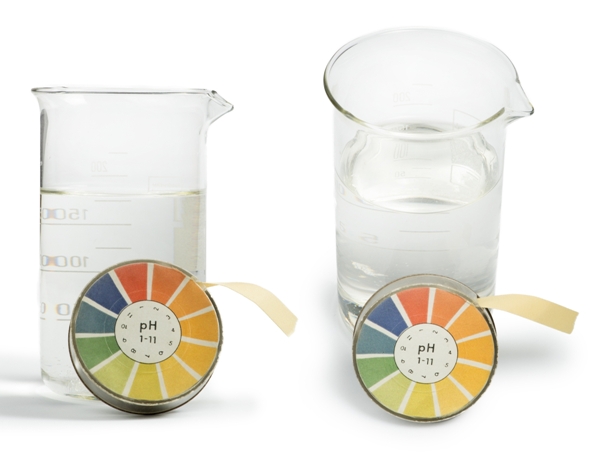
What is Actually in the Water
Where are you sourcing your water from? The answer to this matters more when you’re growing hydroponically. If you’re using city water, chances are there are added chemicals (especially fluoride and chlorine) that, if not considered and dealt with, will alter your nutrient solution and your plants. On the other hand, well water can have high levels of nitrogen, iron, sulfur, lead, calcium and/or magnesium. These can result in higher PPM readings and possibly nutrient “lock-out” of important element. In either case, you could have a problem with toxins from industrial runoff or other types of pollution. Using a Reverse Osmosis water filtration system is often a hydroponic grower’s best bet for optimal PPM.
The Water Temperature
If the water is too cold, seeds won’t germinate, cuttings won’t root and plants will grow slowly or even stop growing and die. If the water is too warm, seeds won’t germinate, cuttings won’t root and plants can die from lack of oxygen or temperature stress. Most plants like their roots to be in the 65 to 80 degrees Fahrenheit range (cooler for winter crops, warmer for tropical plants). When new water is added, give it time to get to the same temperature as the reservoir. Rapid temperature changes are bad!
pH Level of the Water
The pH of the water will determine if the nutrients placed in the water are available for the plants. For example, if you are using city water that has added calcium carbonate (often used to raise the pH of water to prevent pipes from corroding), the iron in your solution can become unavailable. This can lead to a deficiency resulting in yellow and weak leaves. While plants prefer a pH range of 5.8 to 6.2, a pH range of 5.5 to 7.0 is safe for hydroponics growing. Remember, too much adjusting can cause a lot of stress and damage to the plants. Drifts beyond this range should be adjusted. If you’re getting sudden and drastic shifts, be sure to check for a malfunctioning pH meter.
pH Level of the Media
Unstable pH can also be caused by low-quality growing media. To test they media, simply put a sample into distilled or de-ionized water in a clean cup. Let it sit for a bit, then test the pH of the water. Take note of the pH, let it sit for a while longer, test it again and keep repeating the process. Keep doing this for up to a week or until the pH has stabilized. If the pH is rising into the 8.0, 9.0, or 10.0 range avoid using that media, as it could stress or even kill the plants.
When to Change the Nutrient Solution
This depends on a lot of factors. What type of plant is being grown? How many and what size are the plants? How large is the reservoir and how good is the water? What kind of nutrients and how good are they? What’s the temperature and humidity in the growing environment? What type of hydro system is being used? This is why hydro growers tend to take a lot of measurements and notes.
When you start with a fresh reservoir of nutrients, write down the date, pH and PPM of the solution. When the system has been running and the reservoir level drops, note the PPM, then add fresh water and note the PPM again. If the nutrient strength has dropped a lot, add some nutrients to bring the PPM back to where it should be. Record the amount of water added and keep recording the amount every time you top-up. When the total amount of water added equals the size of the reservoir, drain and replace the nutrient solution.
Disease Prevention
Keep your growing area clean and don’t allow soil into the nutrient solution. Wipe your feet (or take off your shoes) and make sure your clothes don’t have plant material from outside plants on them. Disease can spread rapidly, so avoid it by keeping the work environment clean and monitoring it closely. As soon as you see evidence of a diseased plant, remove and destroy it immediately. Then closely watch for any other infected plants. If it becomes a problem, remove any sick plants then drain and renew the nutrients. If possible, flush with fresh water for a day before draining again and refilling with fresh nutrient solution.
Understand They are Just Plants
Don’t get overwhelmed or be intimidated. These are still just plants and they can take quite a bit of stress and still produce abundantly. However, a little bit of preparation and knowledge can help avoid problems down the road. And always remember that the more you grow the better you’ll get at it.



Comment here